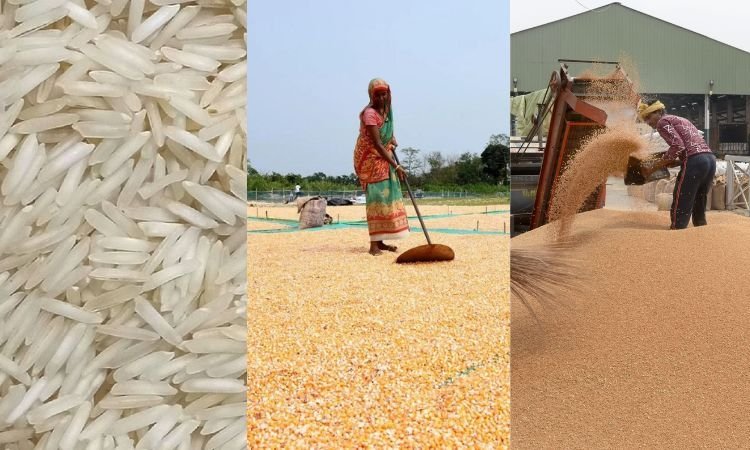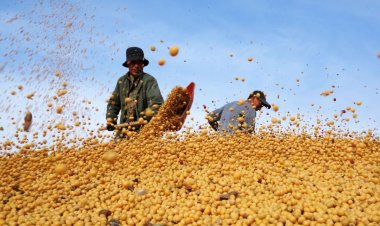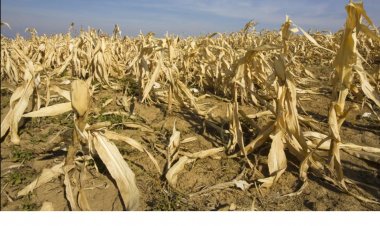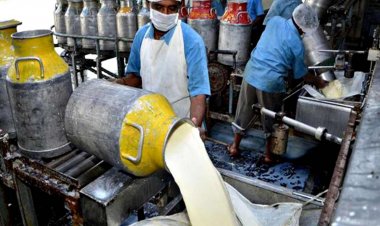The forecast for world cereal production in 2023 has been raised by 3.6 million tonnes, reflecting improved prospects for wheat and, to a lesser extent, coarse grains. Now pegged at 2 823 million tonnes, the global cereal outturn is expected up 0.9 percent (25.9 million tonnes) year-on-year and 10.4 million tonnes above the previous record high reached in 2021.
The forecast for global wheat production in 2023 was lifted by approximately 2 million tonnes this month to 787 million tonnes, but it is still seen down 2.1 percent (17.1 million tonnes) from the 2022 level. The month-on-month upturn is mainly related to larger outputs in the Russian Federation and Türkiye, where the latest official information points to higher yields than previously foreseen.
Relatively smaller reductions were made to the production forecasts for Argentina and Brazil on account of adverse weather conditions that affected crops late in the season. Global coarse grain production is pegged at 1 511 million tonnes in 2023, virtually unchanged month-on-month and 3.6 percent above the outturn in 2022.
A significant upward revision was made to the maize forecast for the United States of America based on higher yields, offsetting cuts to production forecasts for the European Union, as well as for Mexico where dry weather conditions caused localized crop losses and curbed yield prospects.
FAO’s forecast of global rice production in 2023/24 has been raised by 0.9 million tonnes since November, as official assessments in Indonesia and the United Republic of Tanzania indicate that weather disruptions will likely cause somewhat less pronounced output reductions than previously envisaged.
Combined with upgrades to anticipated harvests in the Russian Federation, the Bolivarian Republic of Venezuela and Viet Nam based on increased area under plantings, these adjustments raised the global rice production forecast to 524.9 million tonnes (milled basis), up 0.8 percent from the 2022/23 level.
Looking ahead to the next season, planting of the 2024 winter wheat crop is ongoing in the northern hemisphere countries and, reflecting lower crop prices, area growth could be limited this year.
In the United States of America, owing to more conducive weather conditions this season, about 50 percent of the winter wheat crop was rated as good to excellent in late November 2023, compared to 34 percent last year. In the European Union, whilst planting conditions in central areas have been generally favourable, excessive wet conditions in northern and western parts have impeded sowing and early crop development.
In Ukraine, the continued constraints caused by the war, including declining financial capacities of farmers due to low local farm-gate prices and high input costs, will likely lower the area under wheat further. In the Russian Federation, planting of the winter wheat crop was nearly finalised in late November, with weather conditions improving after inadequate rainfall in the southern areas in October.
Winter wheat sowing in India has progressed at an average pace and because of strong domestic prices. The report says the plantings are forecast to exceed last year’s level.
In Pakistan, the wheat area is forecast to slightly surpass last year’s above-average level, underpinned by record-high domestic prices, with satisfactory input supplies, including water resources for irrigation, boosting yield prospects. Amid overall beneficial weather conditions, wheat plantings in China (mainland) concluded in October, and the area sown is estimated higher than the near-average level of last year.
Sowing of the 2024 coarse grain crops is ongoing in the southern hemisphere countries. In Brazil, due to wet weather conditions, which have slowed down maize sowing, and lower prices, the total area is seen retreating by 5 percent from the record level of 2023.
In Argentina, an uptick in rainfall boosted soil moisture levels following earlier drought conditions. With above-average rains likely to continue, maize production in Argentina is set to rebound in 2024.
In South Africa, early conditions for planting of the 2024 crops have been generally favourable, however, forecasts point to likely drier conditions later in the season, raising concerns for yield potentials.




 Join the RuralVoice whatsapp group
Join the RuralVoice whatsapp group







































